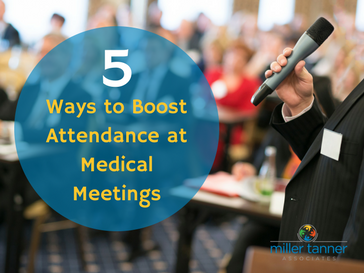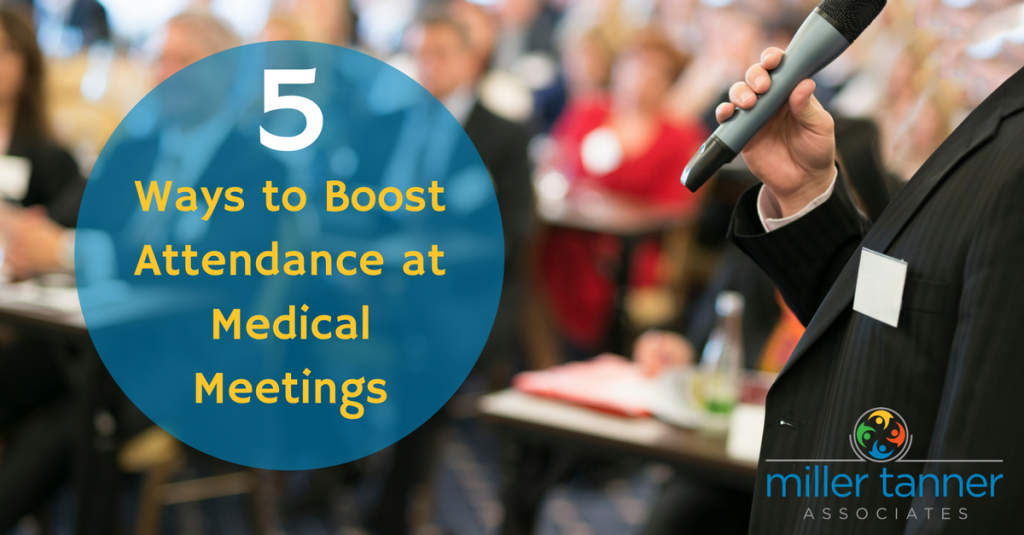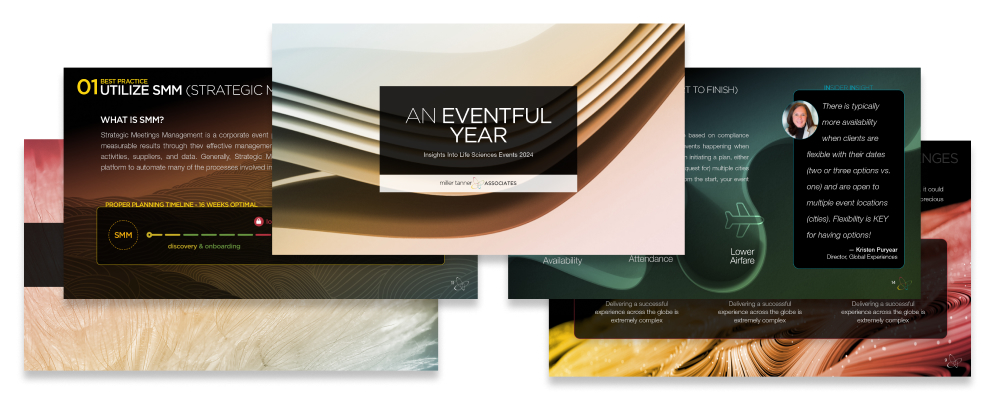Face-to-face events still rank as the best method for training and engaging intellectual discussions among attendees; however, with that, comes many challenges when planning a medical meeting. Patients are healthcare professionals first priority so it’s important to consider these 5 aspects when planning your event.
5 Ways to Boost Attendance at Medical Meetings
Rarely can a sponsor obtain 100% attendance due to the dynamic schedules of healthcare professionals. Make your face-to-face events mean more to the attendees by implementing some of our best practice actions!
1). Choose the Best Location
Location can certainly impact participation. When choosing a venue location, consider one that will offer the shortest time of travel for the majority of travelers. Likewise, a venue within close proximity to some tourist attractions often entices attendees to extend their trip when and if appropriate to extend for personal reasons that also complies with the country specific codes of conduct. In fact, one study suggests that destination ranks as a top driver for meeting attendance. Alternatively, the convenience of an airport property allows your attendees to fly in and out on the same day if needed for saving on budgetary expenses like hotel rooms.
It’s a good idea to look at country representation across the invitee list to consider holidays which may impact participation whether face-to-face or virtual. For instance, Ramadan and Chinese New Year go over multiple weeks and should be avoided where possible depending upon the audience participating.
2). Lead time
With early planning, you are more likely to secure the ideal venue and location.
Providing the healthcare professionals with enough advance notice to manage or prepare for out-of-office coverage for their patient, clinic, and institution responsibilities can increase your attendance. It’s important to notify healthcare professionals of upcoming investigator/medical meetings at least 2-3 months in advance of the event. With advanced notice, you can expect about a 70-80% attendance. This also depends on the relationship between the sponsor and the healthcare professionals.
3). Get Attendee Input & Optimize Agenda
Survey the healthcare professionals for ideal dates and important topics they would like to have covered during the event. By engaging their ideas, you’re more likely to plan an event that they won’t want to miss.
Once you have surveyed the healthcare professionals, create an agenda that is focused on the topics most interesting to them.
Be sure to keep the agenda short and targeted. Creative agendas with varied types of learning are preferable over “death by PowerPoint”. Breakouts for particular topics by role or moving the audience between different training sessions into smaller groups are ways to create variety in the agenda beyond an 8-hour meeting in a general session room.
4). Consider Pre and Post Training
Use pre or post online training sessions to cover topics that are standard to the investigational plan and keep the face-to-face event time focused on key topics and interactions with the attendees. Pre-training can help cut out some of the redundant training and keep your attendees more focused and engaged.
VALTs, our upgraded On-Demand Trainer/Learning Management System (ODT/LMS) is compliant with the Code of Federal Regulations (CFR) Title 21 part 11 for electronic signatures. When used in conjunction with our face-to-face meetings, we believe we can help our clients get 100% attendance ratio in their meetings by recording the live event for consistent training for those unable to attend in person, when corporate team members change, or when site staff attrition happens later.
By having the original training documented, it allows the new staff to get the same training to ensure consistency. Plus it provides an audit trail for your future training reporting and compliance needs.
5). Try Hybrid
If low attendance is projected, frank and open communication is key. There are other event type options, such as hybrid events, that could be considered if the event dates cannot be changed.
Ways that Miller Tanner Associates can support your meeting attendance rate
Miller Tanner fundamentally believes that advanced planning yields positive impact. By that, we mean more people in the actual meeting room seats is our clients’ ultimate success factor. In addition to the methods mentioned above, as your event managers, we have best practices that can boost your meeting attendance rate. For instance, we can survey attendees for topics that are a priority, send out “Save the Dates”, invite key opinion leaders to present and include presenters’ names in the invitation.
Miller Tanner provides our historical data and best practice options to our clients during all phases of the planning period to support their event goals, which includes good attendance. Our team of event experts can support your event from start to finish while implementing best practices to boost your attendance.
- Meet MTA: Steven Garberg, Software Engineer, MTA Technology Services - September 15, 2020
- Case Study: How a Hotel Contract Cancellation Clause Resulted in Zero Penalty During Pandemic - August 20, 2020
- Virtual Events: Frequently Asked Questions - August 11, 2020



